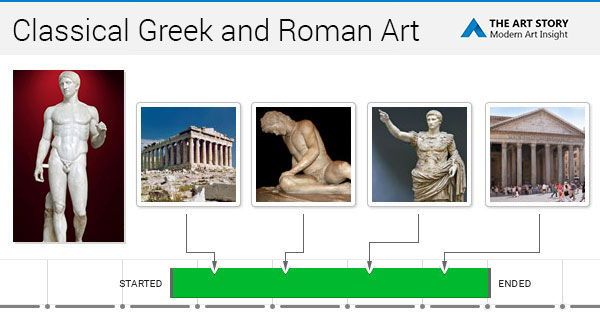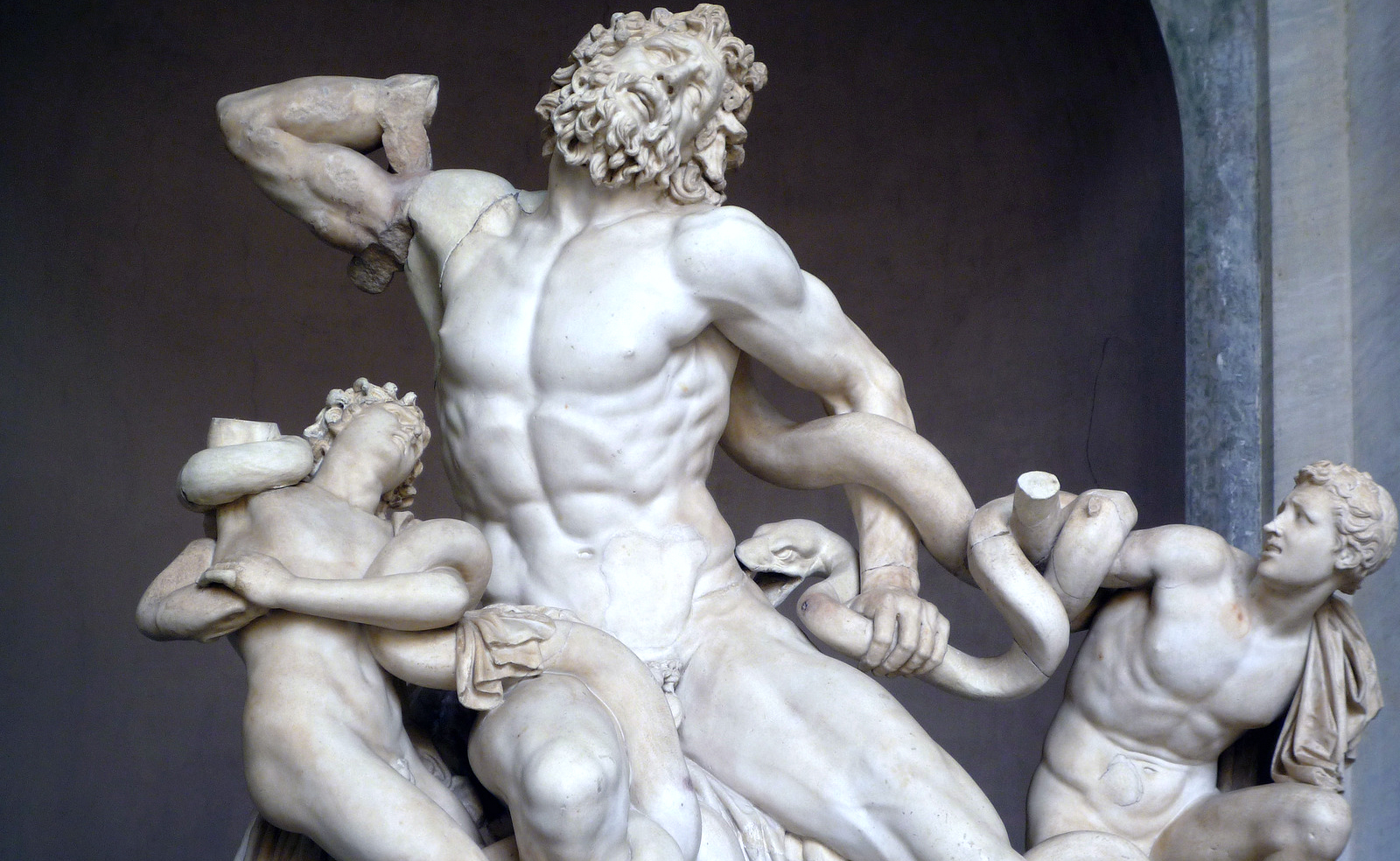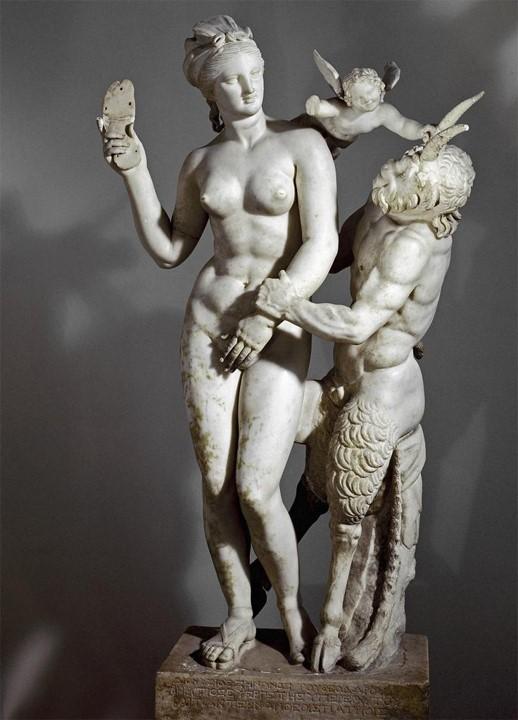Were developed in the late fifth century BCE. Classical Greek sculptors were more imaginative because the Enlightenment released them from the dogma of the pharoahs.
Naturalistic sculpture of a woman standing and holding a small calf.

. Beautiful natural looking images of men and idealized images of Gods. A young woman in mourning. Annibale Carracci 1560-1609 influenced by Federico Barocci1526-1612 and others produced an idealistic naturalism based on Classical models and though he could depict everyday scenes with remarkable truth his world is an idealised one based on the Classical concepts of.
Caravaggio The Doubting of Thomas c. This sculpture and other reliefs of this time have influenced later artists like Auguste Rodin. Naturalism realism abstraction and idealization.
Classical sculpture like Discobulus by Myron was both naturalistic and idealistic TF. The Kritios Boy best represents the classical style in that it is the earliest known use in sculpture of the newly articulated technique in classical Greek sculpture by which the naturalistic weight of the statue is distributed or shifted to one foot is called a. Classical Greek sculpture and that deviate from Classical Greek sculpture is 2 points.
As the figures on this page suggest this classical sculpture became less of a celebration of the gods and more a celebration of everyday human figures eg men conversing. Classical sculpture was both naturalistic and idealistic Government assembly halls The first Christian churches were patterned after basilicas used by he Romans as. The sculpture is highly detailed and carefully modeled and carved.
Greek sculpture marked the height of Classical art and Romantic art grew with Christianity. The tendency to the most complete and absolutely accurate reflection of reality in all its manifestations details and details. Moreover increasing numbers of.
Stevenson on one side of the base. Were classical sculpture naturalistic and idealistic. The naturalism also idealism in art is a flow of about 1870 to 1890 in the broadest sense.
These relief sculptures are known for their dynamic movement and realism and decorated the temple chambers interior walls. This collection will present concepts of idealism seen within art architecture and philosophy of different cultures and time periods. The Parthenon Marbles created by Phidias are perhaps the most famous examples of this style of Classical Greek sculpture.
There out of all the ancient sculpture termed classical seems to be sculpture uniquely and. For details of art movements. Classical Greek figures appear more relaxed than the rigid formal Egyptian and early Greek sculptural poses because _____.
Then by analyzing that sculpture can we come to a better understanding of its essential classical character. Symbolic art for example was found in ancient Egypt. In the visual arts such a tendency manifests itself constantly from time to time taking shape in concrete historical directions trends schools creative.
Classical Greek sculpture became increasingly naturalistic and began to show the body as alive and capable of movement while maintaining an interest. By signing up youll get thousands of step-by-step. Temples and other public buildings.
In Hegels analysis each style of art also had its paradigmatic art form. The student used color appropriately and creatively to enhance the idealized imagery. 1601-02 oil on canvas 107 x 146 cm Sanssouci Picture Gallery Naturalism is resemblance to the real world as we see it around us.
The more naturalistic a work the more it looks like our world and the less naturalistic the less so. The only materials available to the Egyptian sculptors were stones that had a very. Level Two The finished sculpture expresses an ideal form in three dimensions.
The finished sculpture measures between four and six inches. The sculpture has some interesting details and. Can be seen on the Temple of Athena Nike built on the Acropolis between 427 and 424 BCE.
The sculpture is signed Happy Birthday 1976 and W. 3 points QUESTION 25 1. Art that was both Naturalistic and idealistic.
Classical Greek sculpture is both naturalistic and idealistic. One of the most unique developments in classical Greek sculpture was the move to more naturalistic subject matters and treatments. Students are not asked to compare Aulus Metellus to specific examples of Classical Greek sculpture although some students may include such details in their responses.
Idealism originated as an identifiable trait seen in Classic. True or false Classical sculpture was both naturalistic and idealistic. I believe that we can and that we shall find the answer in Greek sculp-ture created for the most part between 500 and 420 BC.
The rigid poses of Egyptian and early Greek figures gave way to a greater interest in anatomy and more relaxed poses. For Hegel Romantic Christian art was the high point of the history of art a history which he believed complete and closed. Classical art that emphasized rational simplicity order and restrained emotion.
Classical art emphasizes rational simplicity order and restrained emotion. Played a major role in the daily lives of the people of ancient Greece.

Form And Reality The Classical Greek Balance Of The Ideal And The Natural Disrecognized Space

Classical Art And Architecture History Theartstory

Introduction To Ancient Greek Art Article Khan Academy

Greek Art Art History Teaching Resources

The Story Of Art Symbolism Idealism And Realism Carolyn Anderson Blog

Classical Greek Sculpture Is Both Naturalistic And Idealistic True Or False Study Com


0 comments
Post a Comment